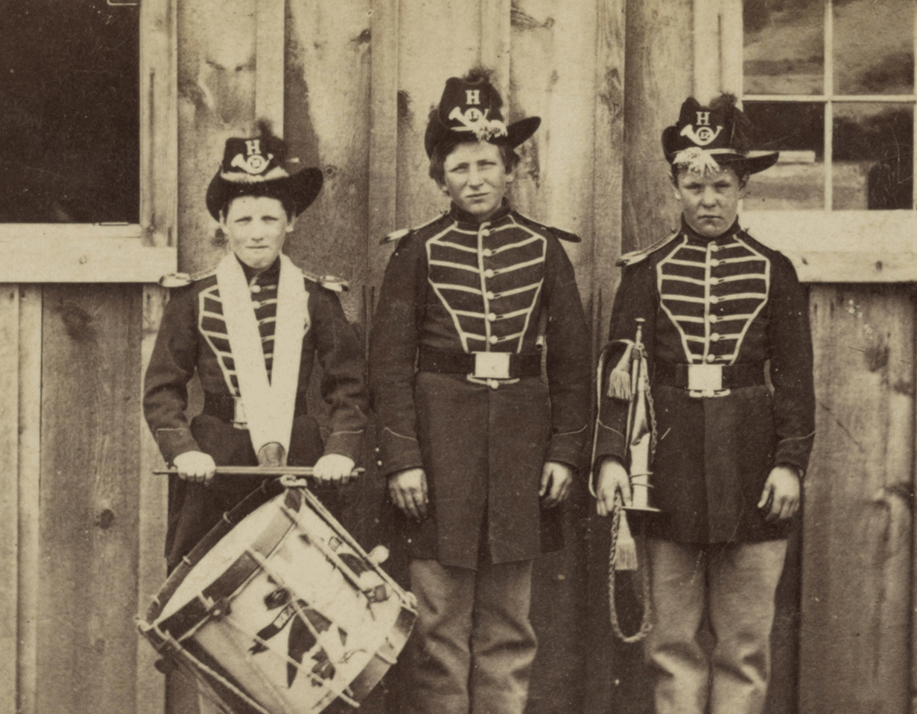Of all the grisly horrors of war, children being forced into conflict is one of the worst. News companies are seemingly forever reporting of youths leaving home and joining up, but the use of children in warfare goes back to way before the modern era.
Underage recruiting began in ancient times, but the first major role of boys in the military was as squires to knights in the Medieval era. This role grew into the likes of drummer boys and cabin boys by the time of the Napoleonic Wars. One of the most prominent eras of child participation in war however is the American Civil War. A conflict filled with controversy, this was just one of them. Here is the story of the child fighters of the Union and the Confederates.

Underage but fighting
When civil war was called, both sides scrambled to muster troops for the coming conflict. There were rules barring underage recruitment but this didn’t stop tens of thousands of boys from answering the call to arms. This was achieved by the boys lying about their age and joining up without their parents’ permission. The military didn’t mind – in their eyes these were more men ready to fight. The youngest boys became drummers and messengers, but the slightly older recruits were thrust straight into the heat of battle. This experience was unlike anything the youths could ever have imagined. Writing after the 1862 battle of Shiloh, 15-year-old Elisha Stockwell Jr said:
“As we lay there and the shells were flying over us, my thoughts went back to my home, and I thought what a foolish boy I was to run away and get into such a mess as I was in. I would have been glad to have seen my father coming after me.”

The story of Johnny Clem
Despite the awful conditions, one Union boy became a bit of a celebrity due to his efforts on the battlefield. Johnny Clem first enlisted when he was nine years old, but was deemed too young to volunteer. He later succeeded, joining up with the 22nd Michigan Volunteer Infantry Regiment as an unofficial drummer boy.
His most famous moment would come at the battle of Chickamauga, where Union soldiers were being surrounded by Confederate forces. Clem was ordered to surrender but panicked and fired his musket, killing a Southern colonel. In a devastating loss for the Union, he would be one of only 66 men to escape out of a force of 455. Clem’s fame continued to grow after Chickamauga when he was captured as a prisoner of war.
On 6 July 1864, a rule was passed by the Union War Department that forbade any soldiers under 16. Clem was released from service but returned after graduating from high school as a Second Lieutenant in 1870 and by his retirement, he was the last civil war veteran to serve in the US Army.

Little drummer boys
Clem was not alone. 48 boys under the age of 18 received the Medal of Honor during the war. Decorations were not much comfort for the boys, however, with many of the survivors suffering lifelong injuries and haunted by memories of the war. The youngest recorded boy to fight was Edward Black, who joined up at the tender age of eight. The youngest member of the Confederate side is believed to be the 14-year-old Orion Howe. An account on Howe’s actions was published by his regiment’s historian:
“We could see him nearly all the way… he ran through what seemed a hailstorm of canister and musket-balls, each throwing up its little puff of dust when it struck the dry hillside. Suddenly he dropped and hearts sank, but he had only tripped. Often he stumbled, sometimes he fell prostrate, but was quickly up again and he finally disappeared from us, limping over the summit and the 55th saw him no more for several months.”
It is estimated that 100,000 Union soldiers were under 15 years old and 20 per cent of all civil war soldiers were under the age of 18. As men began to die on the battlefield, boys said goodbye to their families and became a cheap and readily available fighting force for both sides. The boyish look of the new recruits meant that it was easier for women to sign up to the military and there are stories of women and girls working as spies, relief workers and secret soldiers.

Child soldiers in the modern era
After the civil war, children continued to be used in warfare. Following further instances of child soldiers in World War I, the League of Nations adopted the Geneva Declaration of the Rights of the Child in 1924, but this was not always adhered to. You just have to look at the Hitler Youth’s last-ditch defence of Berlin to see how it was ignored. The Geneva Declaration was improved upon by the Convention on the Rights of the Child in 1989, but as we see on our TV screens, the fight goes on to ensure our offspring aren’t exposed to the grisly horrors of war. An estimated 250,000 child soldiers are still in the world’s militaries today. It’s time to stop.
For more stories of hardship and heroism in warfare, check out issue 19 of History of War or subscribe NOW and get 30% off!
Sources:
- http://opinionator.blogs.nytimes.com/2011/10/04/the-boys-of-war/?_r=0
- https://prezi.com/anfn9nbdmsn7/a-war-they-didnt-understand-child-soldiers-of-the-american-civil-war/
- http://civilwarsaga.com/child-soldiers-in-the-civil-war/
- http://www.pbs.org/wgbh/americanexperience/features/general-article/grant-kids/
- http://www.civilwar.org/education/history/biographies/john-clem.html?referrer=https://www.google.co.uk/
